 W
WGerman folklore is the folk tradition which has developed in Germany over a number of centuries.
 W
WGottfried "Götz" von Berlichingen, also known as Götz of the Iron Hand, was a German (Franconian) Imperial Knight (Reichsritter), mercenary, and poet. He was born around 1480 into the noble family of Berlichingen in modern-day Baden-Württemberg. Götz bought Hornberg Castle (Neckarzimmern) in 1517, and lived there until his death in 1562.
 W
WBoniface, born Winfrid in the Devon town of Crediton in Anglo-Saxon England, was a leading figure in the Anglo-Saxon mission to the Germanic parts of the Frankish Empire during the 8th century. He organised significant foundations of the church in Germany and was made archbishop of Mainz by Pope Gregory III. He was martyred in Frisia in 754, along with 52 others, and his remains were returned to Fulda, where they rest in a sarcophagus which became a site of pilgrimage. Boniface's life and death as well as his work became widely known, there being a wealth of material available—a number of vitae, especially the near-contemporary Vita Bonifatii auctore Willibaldi, legal documents, possibly some sermons, and above all his correspondence. He is venerated as a saint in the Christian church and became the patron saint of Germania, known as the "Apostle to the Germans".
 W
WA changeling, also historically referred to as an auf or oaf, is a human-like creature found in folklore and folk religion throughout Europe. A changeling was believed to be a fairy that had been left in place of a human stolen by the fairies.
 W
WDeutsche Sagen is a publication by the Brothers Grimm, appearing in two volumes in 1816 and 1818. The collection includes 579 short summaries of German folk tales and legends.
 W
WThe Deutsche Volksliedarchiv, a research institute for Volkslied in German, was founded in 1914 and was integrated into the University of Freiburg in 2014, now called Zentrum für Populäre Kultur und Musik. It has extensive collections of traditional and popular songs, maintained and expanded in the new centre, and accessible to the public without restriction. Before 2014, it was independent scientific research institute of the state Baden-Württemberg, based in Freiburg im Breisgau.
 W
WThe Düsseldorf's cartwheeler is the oldest tradition of Düsseldorf and became one of their famous landmarks. The symbol of the cartwheel is found on many souvenirs and various naming Düsseldorf again. This tradition was honoured in 1954 by the erection of a fountain, called Cartwheeler's Fountain, in Düsseldorf's Burgplatz.
 W
WThe Easter Bunny is a folkloric figure and symbol of Easter, depicted as a rabbit—sometimes dressed with clothes—bringing Easter eggs. Originating among German Lutherans, the "Easter Hare" originally played the role of a judge, evaluating whether children were good or disobedient in behavior at the start of the season of Eastertide, similar to the "naughty or nice" list made by Santa Claus. As part of the legend, the creature carries colored eggs in its basket, as well as candy, and sometimes toys, to the homes of children. As such, the Easter Bunny again shows similarities to Santa and Christmas by bringing gifts to children on the night before a holiday. The custom was first mentioned in Georg Franck von Franckenau's De ovis paschalibus in 1682, referring to a German tradition of an Easter Hare bringing eggs for the children.
 W
WA fairy tale, fairytale, wonder tale, magic tale, fairy story or Märchen is an instance of European folklore genre that takes the form of a short story. Such stories typically feature mythical entities such as dwarfs, dragons, elves, fairies, giants, gnomes, goblins, griffins, mermaids, talking animals, trolls, unicorns, or witches, and usually magic or enchantments. In most cultures, there is no clear line separating myth from folk or fairy tale; all these together form the literature of preliterate societies. Fairy tales may be distinguished from other folk narratives such as legends and explicit moral tales, including beast fables.
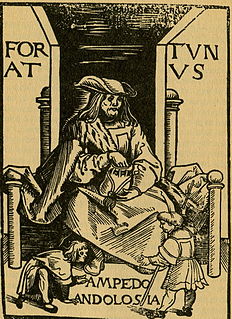 W
WFortunatus is a German proto-novel or chapbook about a legendary hero popular in 15th- and 16th-century Europe and usually associated with a magical inexhaustible purse.
 W
WThe story of Christman Genipperteinga tells of a German serial killer and bandit of the 16th century. He reportedly murdered 964 individuals starting in his youth over a 13-year period, from 1569 until his capture in 1581. The story of Christman Genipperteinga was printed in 1581 or shortly thereafter. In 1587 a condensed account was included in a collection of calendar histories. An even more condensed Czech translation of that account appeared in 1590. Remarkable is also a French translation in a 1598 wonder book, illustrated with a woodcut exhibiting the various details of the tale.
 W
WThe Gespensterbuch is a collection of German ghost stories written by August Apel and Friedrich Laun and published in five volumes between 1811–1815.
 W
WGrünkohlessen is an old wintertime custom in North Germany, and parts of Scandinavia, involving drinking, games, and a feast of regional dishes, typically featuring kale, potatoes, and sausages. It is practised in the Free Hanseatic City of Bremen and its surrounding districts of Osterholz, Diepholz, Verden and Rotenburg, in Oldenburg Land, the County of Bentheim, Emsland, Osnabrück Land and East Frisia, in the Middle Weser Region, and also in Hamburg, Cuxhaven, in the Hanover Region, Brunswick Land, in the Magdeburg region, in Westphalia and Schleswig-Holstein.
 W
WGuggenmusik is a term widely used in the Alemannic region of Switzerland, Austria and southern Germany to designate both a Carnival marching band and the type of music it plays.
 W
WHans von Trotha was a German knight and marshal of the prince-elector of the Palatinate. He also bore the French honorary title of a Chevalier d’Or. In 1480, the elector enfeoffed him with the two castles of Berwartstein and Grafendahn which lay in the South Palatine part of the Wasgau region within the Palatinate Forest. In local folklore he is known as Hans Trapp or, more rarely, Hans Trott.
 W
WHeart of Stone is a fairy tale written by Wilhelm Hauff. It was published in 1827 in a collection of fairy tales that take place within the narrative of The Spessart Inn. It formed the basis for the East German film Heart of Stone, from 1950 and other movie releases.
 W
WChristian Heinrich Heineken or Heinecken, also known as "the infant scholar of Lübeck", was a German child prodigy who lived only to the age of four.
 W
WThe Helm of Cannae is an artefact in the antiquities collection of Franz, Count of Erbach-Erbach, at Erbach Palace in Erbach im Odenwald. It is, reputedly, one of the few surviving helmets from the field of the Battle between the Roman Republic and the Carthaginians under Hannibal in 216 BC. It is most famous for a legend about its acquisition by the count.
 W
WA hulder is a seductive forest creature found in Scandinavian folklore. Her name derives from a root meaning "covered" or "secret". In Norwegian folklore, she is known as huldra. She is known as the skogsrå "forest spirit" or Tallemaja "pine tree Mary" in Swedish folklore, and ulda in Sámi folklore. Her name suggests that she is originally the same being as the völva divine figure Huld and the German Holda.
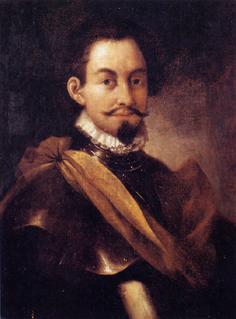 W
WPhilipp von Hutten was a German adventurer, and an early European explorer of Venezuela. He is a significant figure in the history of Klein-Venedig, the concession of Venezuela Province to the Welser banking family by Charles V, Holy Roman Emperor and King of Spain.
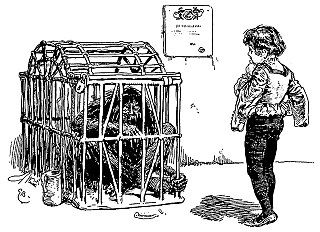 W
W"Iron John" is a German fairy tale found in the collections of the Brothers Grimm, tale number 136, about a wild iron-skinned man and a prince. The original German title is Eisenhans, a compound of Eisen "iron" and Hans. It represents Aarne–Thompson type 502, "The wild man as a helper".
 W
WKasperle, Kasper, or Kasperl is a famous and traditional puppet character from Austria, German-speaking Switzerland, and Germany. Its roots date to 17th century, and it was at times so popular that Kasperltheater was synonymous with puppet theater. Kasperltheater includes the following characters: Kasper, Gretel, Seppel, Grandmother, princess, king, witch, robber, and crocodile. The older, more traditional Kasperle shows are very similar to "Mister Punch". There are also "Kasperle versions" of the Grimm and other fairy tales and of "modern fairy tales".
 W
WKing Goldemar is a dwarf or kobold from Germanic mythology and folklore. By the Middle Ages, Goldemar had become the king of the dwarfs in German belief. In the fairy tale "The Friendship of the Dwarfs", the author Villamaria depicts Goldemar as a "mighty dwarf king" with a queen and a court of dwarf nobles at his service. He has long, silver hair and beard and wears a crown and a purple mantle. In one tale, he runs away with the daughter of a human king. Fragments of an epic poem by Albrecht von Kemenaten called Goldemar survive. The poem tells of Dietrich's encounter with the dwarf king. The king also features in "Der junge König und die Schafërin" by German poet Ludwig Uhland. Goldemar's brothers, Alberich or Elberich and Elbegast, feature in other poems.
 W
WA kitchen witch, sometimes called a cottage witch or a "Scandinavian" kitchen witch doll, is a poppet or homemade doll resembling a stereotypical witch or crone displayed in residential kitchens as a good luck charm and to ward off bad spirits.
 W
WMatthias Klostermayr, also known as Bavarian Hiasl, was a German outlaw, poacher and social rebel who has come to be described, particularly in accounts written in the English-speaking world, as the Bavarian Robin Hood. A native of the municipality of Kissing near Augsburg, Bavarian Hiasl became an outlaw, first as a poacher and ultimately as the Robin Hood-like leader of a gang of robbers who, during the 1760s, plundered, sacked and robbed in the region around Munich, Augsburg and Swabia. Although he was captured and put to death by being broken on the wheel in 1771, his mythical accumulated treasure has never been found, and legends surrounding its purported whereabouts have placed it somewhere near one of his hideouts, in an old cave in Kuchelschlag Wood or on Jexhof Farm.
 W
WKnecht Ruprecht is a companion of Saint Nicholas as described in the folklore of Germany. He first appears in written sources in the 17th century, as a figure in a Nuremberg Christmas procession.
 W
WMathias Kneißl, known as Robber Kneißl, was a German outlaw, poacher and popular social rebel in the Dachau district, in the Kingdom of Bavaria. Chased by the police, Kneißl became a legendary hero with the rural people because of his witful and artful fight against the authorities.
 W
WKrampus is a horned, anthropomorphic figure, in Alpine folklore, who during the Christmas season scares children who have misbehaved, assisting Saint Nicholas. The pair visit children on the night of the 5th December, and Saint Nicholas rewards the well-behaved children with modest gifts such as oranges, dried fruit, walnuts and chocolate whilst the badly behaved ones only receive punishment with birch rods.
 W
WThe Lorelei, also spelled Loreley in German, is a 132-metre-high (433 ft), steep slate rock on the right bank of the River Rhine in the Rhine Gorge at Sankt Goarshausen in Germany, part of the Upper Middle Rhine Valley UNESCO World Heritage Site. The 1930s Loreley Amphitheatre is on top of the rock.
 W
WA maypole is a tall wooden pole erected as a part of various European folk festivals, around which a maypole dance often takes place.
 W
WMephistopheles, also known as Mephisto, is a demon featured in German folklore. He originally appeared in literature as the demon in the Faust legend, and he has since appeared in other works as a stock character.
 W
WThe Mouse Tower (Mäuseturm) is a stone tower on a small island in the Rhine, outside Bingen am Rhein, Germany.
 W
WThe Muhlenberg legend is an urban legend in the United States and Germany. According to the legend, the single vote of Frederick Muhlenberg, the first ever Speaker of the US House of Representatives, prevented German from becoming an official language of the United States. The story has a long history and has been told in several variations, which may be based in part on actual events.
 W
WBaron Munchausen is a fictional German nobleman created by the German writer Rudolf Erich Raspe in his 1785 book Baron Munchausen's Narrative of his Marvellous Travels and Campaigns in Russia. The character is loosely based on a real baron, Hieronymus Karl Friedrich, Freiherr von Münchhausen.
 W
WThe Oktoberfest is the world's largest Volksfest. It is held annually in Munich, Bavaria, Germany. It is a 16- to 18-day folk festival running from mid- or late September to the first Sunday in October, with more than six million people from around the world attending the event every year. Locally, it is called d’Wiesn, after the colloquial name for the fairgrounds, Theresienwiese. The Oktoberfest is an important part of Bavarian culture, having been held since the year 1810. Other cities across the world also hold Oktoberfest celebrations that are modeled after the original Munich event.
 W
WThe Pied Piper of Hamelin is the title character of a legend from the town of Hamelin (Hameln), Lower Saxony, Germany. The legend dates back to the Middle Ages, the earliest references describing a piper, dressed in multicolored clothing, who was a rat-catcher hired by the town to lure rats away with his magic pipe. When the citizens refuse to pay for this service as promised, he retaliates by using his instrument's magical power on their children, leading them away as he had the rats. This version of the story spread as folklore and has appeared in the writings of Johann Wolfgang von Goethe, the Brothers Grimm, and Robert Browning, among others.
 W
WPrincess Ilse is the name of a popular tourist destination in the Ilse valley near the town of Ilsenburg in the Harz Mountains of central Germany. The spot was named after the River Ilse, which rises on the highest mountain in the Harz, the legendary Brocken, and flows through the romantic Ilse valley to Ilsenburg.
 W
WReynard the Fox is a literary cycle of medieval allegorical Dutch, English, French and German fables. The first extant versions of the cycle date from the second half of the 12th century. The genre is very popular throughout the Late Middle Ages, and in chapbook form throughout the Early Modern period.
 W
WRutenfest is an annual town festival in Ravensburg, Upper Swabia, Germany. At the end of the school term, local pupils and adult citizens take part in many Rutenfest events including a parade watched by tens of thousands of spectators. Rutenfest is generally considered the high spot of Ravensburg's city life. Alumni of local schools flock back to their hometown, to meet family and friends at the events officially organized by the Rutenfest Commission, and at hundreds of private parties.
 W
WThe Seven Swabians is a German fairy tale, collected by The Brothers Grimm in the second volume edition of their Kinder- und Hausmärchen (1857) under the number KHM119. The term Swabians refers to people from the German region Swabia, though in Switzerland it refers to Germans in general.
 W
WThe Smith of Kochel is a figure from Bavarian myth. According to this myth, he was a soldier in the Habsburg-Ottoman Wars. Armed with nothing but a bar, he supposedly stoved in the gates of Belgrade. He refused rewards for his heroic deed from the prince electors.
 W
WAngelika Tampier, known as Angela Spook, became known as "Hexe von der Kö" due to her public appearance on Düsseldorf's Königsallee for twenty-five years in a witch costume.
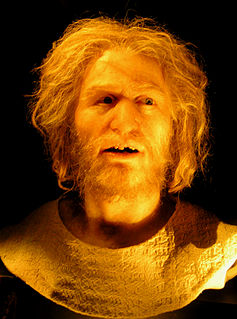 W
W"Nikolaus" Storzenbecher or "Klaus" Störtebeker was reputed to be leader of a group of privateers known as the Victual Brothers. The Victual Brothers were originally hired during a war between Denmark and Sweden to fight the Danish and supply the besieged Swedish capital Stockholm with provisions. After the end of the war, the Victual Brothers continued to capture merchant vessels for their own account and named themselves "Likedeelers". Recent studies manifest that Störtebeker was not called "Klaus" by prename but "Johann".
 W
WA straw bear is a traditional character that appears in carnival processions or as a separate seasonal custom in parts of Germany, mainly at Shrovetide but sometimes at Candlemas or Christmas Eve.
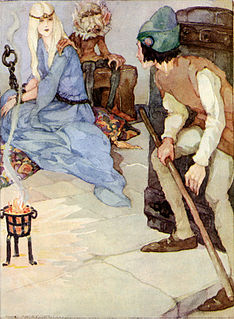 W
WStrong Hans is a German fairy tale collected by the Brothers Grimm and published in their collection as number KHM 166.
 W
WVenusberg is a motif of European folklore rendered in various legends and epics since the Late Middle Ages. It is a variant of the folktale topos of "a mortal man seduced by the fairy queen visits the otherworld". In German folklore of the 16th century, the narrative becomes associated with the minnesinger Tannhäuser who becomes obsessed with worshipping the goddess Venus.
 W
WTill Eulenspiegel is the protagonist of a German chapbook published in 1515 with a possible background in earlier Middle Low German folklore.
 W
WThe "Town Musicians of Bremen" is a popular German fairy tale collected by the Brothers Grimm and published in Grimms' Fairy Tales in 1819.
 W
WThe Überlinger Hänsele is a famous carnival figure of the city of Überlingen am Bodensee, Germany.
 W
WWalpurgis Night, an abbreviation of Saint Walpurgis Night, also known as Saint Walpurga's Eve, is the eve of the Christian feast day of Saint Walpurga, an 8th-century abbess in Francia, and is celebrated on the night of 30 April and the day of 1 May. This feast commemorates the canonization of Saint Walpurga and the movement of her relics to Eichstätt, both of which occurred on 1 May 870.
 W
WThe Wild Hunt is a folklore motif that historically occurs in the folklore of various northern European cultures. Wild Hunts typically involve a "soul-raving" chase led by a mythological figure escorted by a ghostly or supernatural group of hunters passing in wild pursuit. The leader of the hunt is often a named figure associated with Odin in Germanic legends, but may variously be a historical or legendary figure like Theodoric the Great, the Danish king Valdemar Atterdag, the Welsh psychopomp Gwyn ap Nudd, biblical figures such as Herod, Cain, Gabriel, or the Devil, or an unidentified lost soul or spirit either male or female. The hunters are generally the souls of the dead or ghostly dogs, sometimes fairies, Valkyries, or elves.